Home care jobs have been booming over the recent decades. Why?
Thanks to the amazing advancements in technology and medicine, people with chronic illnesses are living longer than ever. But living longer doesn’t always mean having the needed support.
With more people retiring later and families becoming smaller or more spread out, the traditional support systems aren’t what they used to be. This means that informal caregiving—like relying on family members to help out—isn’t as common anymore. As a result, the demand for professional home care services is on the rise.
Moreover, it’s often a more affordable option compared to moving into a facility, and it allows people to stay in their own homes—where they feel comfortable. This idea of “aging in place” is gaining traction, allowing older adults to live in their communities with some level of independence instead of being placed in residential care.
With all this change happening in home care, it’s super important to nail down how shifts are managed within organizations. Can we do it? Absolutely!
Let’s take a closer look at the main challenges of shift planning for home care agencies today and explore the solutions you may use to move forward with confidence and continue to provide high-quality service to patients at all times.
5 Biggest Challenges of Shift Scheduling in the Home Care Industry
1. Understaffing Nightmare
It takes a dedicated staff to provide effective care to those in need. Yet, unfortunately, staff shortages pose a pressing problem in the healthcare industry worldwide, leading to:
• Last-minute cancellations: when someone calls in sick or can’t make it, it’s not just a headache; it can disrupt the entire day for clients who rely on those services.
• Overworked staff: the remaining caregivers are stretched thin, and we all know that the burned-out staff aren’t providing the best care.
• Inconsistent care: with constant changes in who’s available, clients may not get the same caregiver regularly, affecting their comfort and trust.
Picture this: you have a roster of clients that require round-the-clock care but only half the number of staff members to fulfill those shifts. You’re left with no choice but to schedule the same employees for several shifts, neglecting their need for rest and putting your business at risk of ever-increasing overtime costs and growing turnover rates. In other words, you get a domino effect of scheduling chaos.
Solutions:
Firstly, let’s get one thing straight – we’re not here to throw money at the problem. Sure, offering competitive salaries and benefits is important, but that alone won’t guarantee a steady stream of qualified applicants.
Instead:
- Focus on creating a positive work culture: Building a sense of camaraderie among staff members and promoting a supportive work environment can go a long way in retaining current employees and attracting potential ones. Host team-building activities, organize appreciation events, and provide opportunities for professional development.
- Get creative with recruitment efforts: Posting on job boards and social media is a great start, but don’t limit yourself to just that. You may attend local recruitment events and job fairs, partner with local colleges and training programs, and offer referral bonuses for current employees.
- Don’t forget about technology: With telehealth becoming a mainstay in healthcare, why not consider implementing remote work options for some positions? This can open up a larger pool of potential employees who may not be able to physically commute to the office or client’s home.
Pro tip:
Use tools like actiPLANS to create schedules that take into account staff availability, client needs, and even last-minute changes. Leverage:
- Vizualization. If someone calls out sick, you will easily find a replacement among the available employees.
- Improved communication. With instant schedule updates and quick messages, everyone stays in the loop, reducing confusion and enhancing teamwork.
- actiTIME integration. With a tool for tracking hours, you can keep an eye on who’s working what shifts. This helps prevent burnout by ensuring that no one is overloaded.
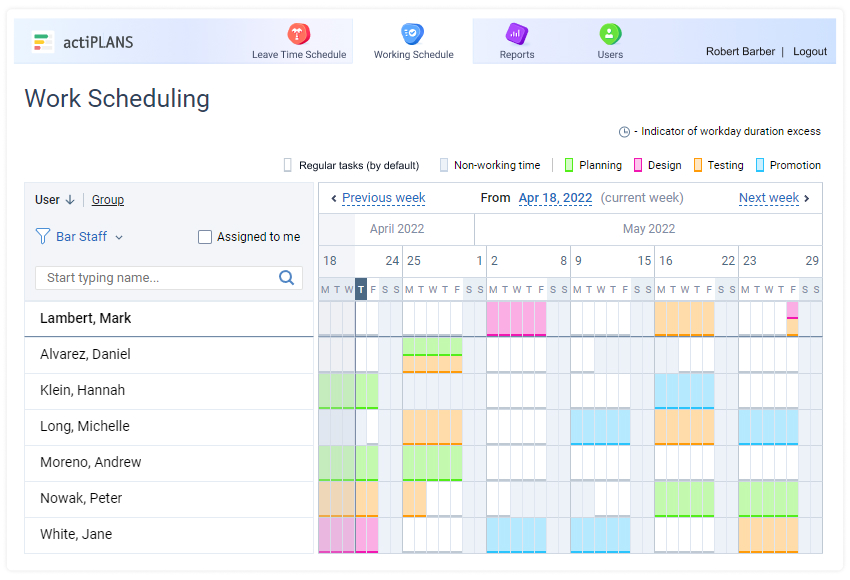
2. Schedules Rollercoaster
Home care is all about providing support and comfort to the clients. But when schedules are constantly shifting… Whether it’s patient’s needs, staff availability issues, or unexpected emergencies, these changes impact everyone involved.
Just imagine relying on someone for your daily needs—whether it’s help with meals, medication reminders, or just some good old-fashioned companionship.
Now imagine that person changes every week (or even every day!). It can be unsettling, to say the least. Clients thrive on familiarity. When their caregivers change frequently, it can lead to anxiety and discomfort. They may feel like they’re losing control over their own care, which is the last we want.
Families in turn rely on caregivers to keep them updated about their loved ones’ well-being. But when schedules are in flux, communication can break down.
Family members might not know who’s coming in or what to expect. Plus, they want the peace of mind that comes from knowing their loved one is in good hands.
And let’s not forget about our employees! They’re the backbone of home care, but constant schedule changes can lead to serious stress. When caregivers have to adapt to new clients or constantly shift their own schedules, it can be overwhelming.
With all this chaos, the quality of care can take a hit. Clients may not receive the personalized attention they need, and caregivers may struggle to build rapport with those they’re caring for.
Solutions:
- Communicate regularly: To deal with continual schedule changes effectively, it’s important to maintain regular communication with clients, families, and caregivers. Make sure that your staff knows that changes to their schedule may be necessary, and encourage them to be flexible. Keep everyone aware of the latest changes and provide all the information they need to make the necessary adjustments.
- Have a backup plan: Even with the best planning and foresight, unexpected emergencies can arise. To avoid any disruptions in care, make sure you have a backup plan in place. Whether it’s having a pool of on-call workers who can step in at a moment’s notice or a system for shifting around schedules, make sure you have a plan for dealing with last-minute emergencies or cancellations.
- Embrace work scheduling software: One of the best ways to handle continual schedule changes is to use technology to your advantage. This means investing in reliable scheduling software that is easy to use and can be accessed by all staff members. With the help of technology, you can keep track of shifts, quickly and efficiently update schedules, notify caregivers of any changes, and ensure that everyone is on the same page.
Pro tip:
actiPLANS has flexible settings and allows you to create custom shift types or any other work types that are tailored specifically to your agency’s needs.
The software has flexible settings and allows you to create custom shift types or any other work types that are tailored specifically to your agency’s needs. Plus, its intuitive interface featuring visual timelines makes shift scheduling truly enjoyable and accessible for every party involved.

actiPLANS also incorporates automated email notifications, which means no more tedious reminders or chasing after employees to confirm their shifts (talk about a load off your shoulders!). And thanks to its informative reports, you can easily optimize your shift planning to ensure your agency runs like a well-oiled machine.

Check out actiPLANS in action during a free 30-day trial period. Click here to sign up.
3. Planning Chaos
Considering the above challenge of continual schedule changes, many home care agencies tend to rely heavily on on-call employees. However, without a clear plan in place, you may face a whole host of problems such as confusion and loss of trust.
Your patients depend on routine, and a sudden change can throw them off completely.
When caregivers don’t have a stable schedule, it’s also tough for them to build rapport with clients.
Imagine this: your agency has a sudden surge in demand for home care services and calls for on-call staff to step up to the plate. But wait, there’s a problem! You failed to plan for this sudden upsurge, and now your on-call staff is limited, resulting in delays in service delivery and frustrated clients. What a disaster!
Not only that, but the lack of planning also results in overburdening the same set of on-call staff, leading to poor job satisfaction and higher turnover.
As they say, too much of anything is poisonous, and relying on the same people to handle emergencies all the time is detrimental not only to their well-being but also to your agency’s productivity.
Solutions:
- Plan ahead: Always create a solid schedule beforehand. Make sure each employee knows when they’re supposed to work in advance and communicate any changes as early as possible to avoid last-minute cancellations.
- Apply a structured scheduling system: Schedule employee shifts based on the needs of each patient and consider rotating shifts amongst your employees. By doing so, you can maintain a better work-life balance among employees, avoid overtime costs, and ensure that there are always enough staff members available to provide quality care.
- Offer an option for employee self-scheduling: If employees can choose shifts based on their availability, preferences, and needs, they obtain more control over their work-life balance, while you get a chance to reduce reliance on on-call shifts and maintain higher job satisfaction at the workplace.
- Incentivize consistency: Reward and recognize employees who consistently show up for their scheduled shifts by offering additional benefits or higher pay. This will help not only reduce the need for on-call employees but also create a more reliable workforce.
Pro tip:
With self-scheduling functionality in actiPLANS, your employees can choose their preferred shifts and dates of work, leaving you with one less thing to worry about. And fear not, dear employer, as you have the last say in the process and retain full control to review and edit schedules as you deem appropriate.
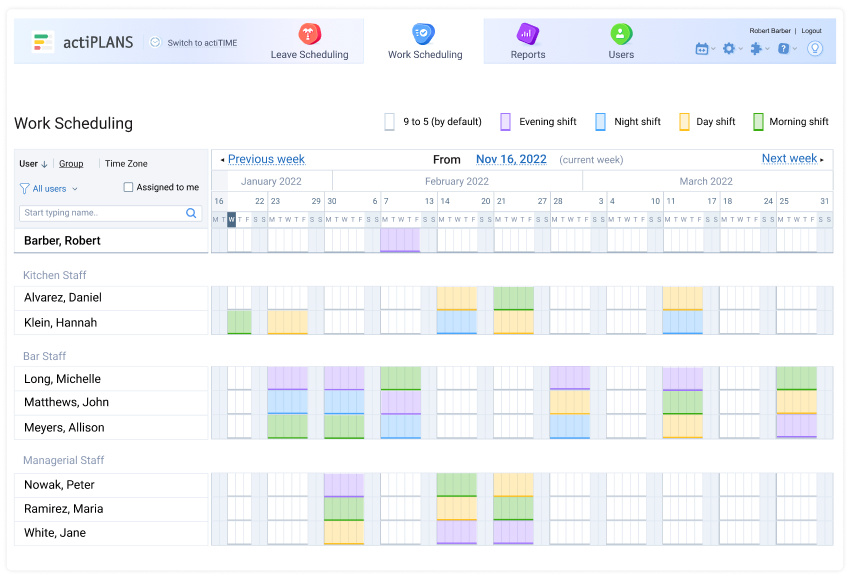
4. Overtime Dilemma
In the home care industry, overtime pay is mandated by law. It’s not a perk or a bonus, it’s a requirement. And when you’re dealing with a large number of caregivers who work long hours (12- or 24-hour shifts), overtime costs can quickly spiral out of control.
Let’s look at some numbers, shall we?
According to the U.S. Bureau of Labor Statistics, the average hourly pay for a home health aide ranges from $14.26 to $15.45 per hour. But when you factor in overtime pay (which is 1.5 times the regular hourly rate), that number jumps to $21.39 or $23.17 per hour.
That may not seem like a lot, but when you multiply it by the number of overtime hours worked by all the caregivers in a week or a month, those costs can add up quickly.
And here’s the kicker – many home care agencies have fixed budgets that they can’t exceed. So, for smaller agencies, overtime costs can lead to financial strain and tough decisions down the line.
Some choose to reduce the number of shifts available, which would mean fewer caregivers available to provide care. Others have to cut back on training and support programs for their caregivers, which could impact the quality of care provided.
Solutions:
- Align staff hours with patient demand: At times, patient demand can fluctuate, and some patients may require less support over time. Therefore, reducing the hours of caregivers based on patient demand, such as how often patients need assistance or how many caregivers are needed in each shift, can help avoid staffing excesses.
- Determine your staffing needs: Take into account factors such as patient acuity, language barriers, and medical conditions that require specialized care. This will help you figure out the appropriate number of staff members and the required level of expertise.
- Hire more help: It might seem counterintuitive to hire more staff when you’re trying to save money, but investing in additional caregivers can actually reduce overtime costs in the long run.
- Communicate: Encourage caregivers to speak up if they feel overwhelmed or if they’re consistently being asked to work extra hours. Keeping those lines of communication open can help identify issues before they become bigger problems.
- Invest in your team: Happy staff equals less turnover, which equals less overtime. Thus, by taking care to retain your employees, you can significantly reduce unnecessary expenses. This means offering competitive wages, comprehensive benefits, and professional development opportunities.
- Track employees’ time: By regularly tracking caregivers’ working hours, you will easily detect any unplanned overtime work and compare it with your billed hours or budget to identify and address potential excess.
- Promote self-care: Remind caregivers to take breaks and prioritize their well-being. Happy caregivers lead to happy clients!
Pro tip:
It can be tough to manage and control overtime expenses. But thankfully, actiTIME is here to help you stay on top of your game.
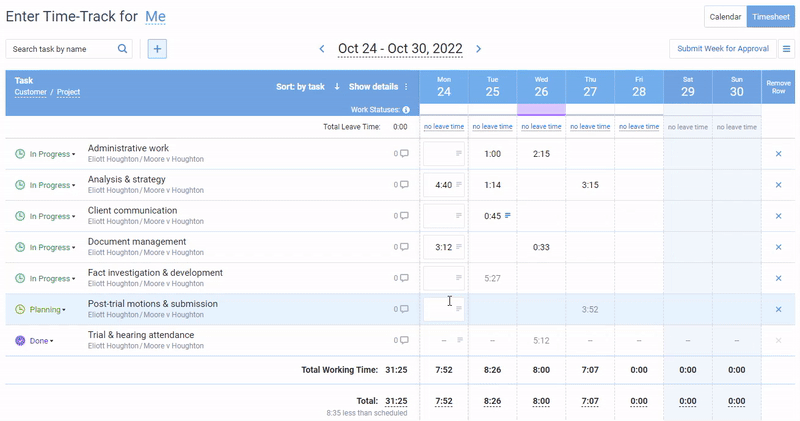
The software allows for accurate time tracking and helps to keep tabs on exactly how much overtime your employees are racking up. This, in turn, lets you make smarter scheduling decisions and ensure that you’re only paying out for the extra time when it’s truly necessary.
But that’s not all.
actiTIME also provides detailed reports and insights that can help you identify performance patterns, time-wasting tasks, and other trends that lead to higher overtime costs. From there, you can work to address the root causes of these issues and make changes that will ultimately increase savings in your organization.

Give actiTIME a while during a free 30-day trial. Click here to sign up.
5. Obsolete scheduling methods
Age-old methods of manual scheduling can result in errors and inaccuracies that hurt the agency’s efficiency and profits. But, what exactly makes them so problematic?
- These methods are time-consuming. Scheduling by hand can take hours if not days, and with the ever-changing schedules of home care workers, mistakes are almost inevitable. With outdated scheduling methods, it’s a nightmare for agencies to manage last-minute schedule changes, employee absences, and client requests, leading to lapses in care and poor client satisfaction.
- Paper-based scheduling methods are prone to human error: Caregivers may be double-booked or scheduled for an unavailable shift due to data entry mistakes. In addition, with outdated schedules, agency workers may mistakenly show up at clients’ homes at the wrong time or not at all, affecting the agency’s reputation and trustworthiness.
- Manually processing time and attendance records is also a labor-intensive task. Staff members spend countless hours verifying timesheets, correcting errors, and managing payroll discrepancies. This administrative burden diverts attention from more critical tasks, such as client care and staff training.
- Outdated scheduling methods don’t provide insights into staff availability or client needs. Without this data, agencies struggle to make informed decisions about staffing levels, leading to either overstaffing or understaffing.
- Other inefficiencies stemming from such approach to scheduling cause to increased operational costs. Agencies may find themselves paying more in overtime wages or facing penalties for payroll errors. Additionally, high turnover rates mean spending more on recruitment and training new staff.
At the end of the day, all these issues lead to one significant consequence: client dissatisfaction. When clients don’t receive consistent, quality care, they may seek services elsewhere. In a competitive market, retaining clients is crucial for agency success.
Solution:
actiPLANS is the work scheduling solution your home care agency needs to keep up with the demands of modern-day life. With its user-friendly features and cutting-edge technology, you’ll wonder how you ever managed without it.
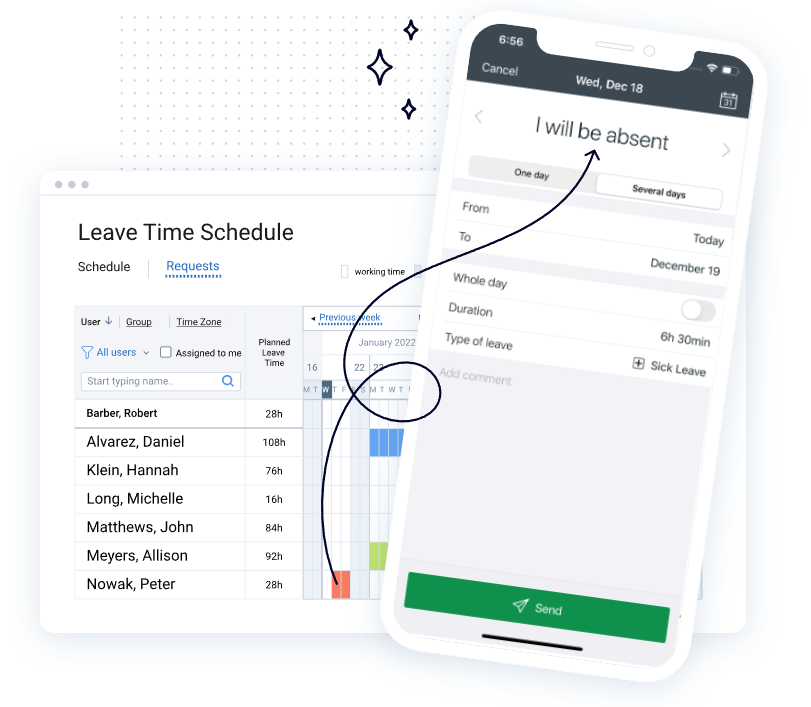
actiPLANS is not your granny’s paper schedule! It’s a modern work scheduling solution that packs quite a punch for your home care agency. It offers:
- Visual timelines,
- Employee self-scheduling features,
- Robust functionality for streamlined time off management,
- Comprehensive reports that will make your resource planning a breeze.
Did somebody say “automatic notifications?” Yes, please!
actiPLANS sends alerts to remind you of upcoming shifts, recent schedule changes, and time off requests. Plus, you can access everything through the mobile app, making it simple to stay on top of your scheduling needs while you’re on the go.
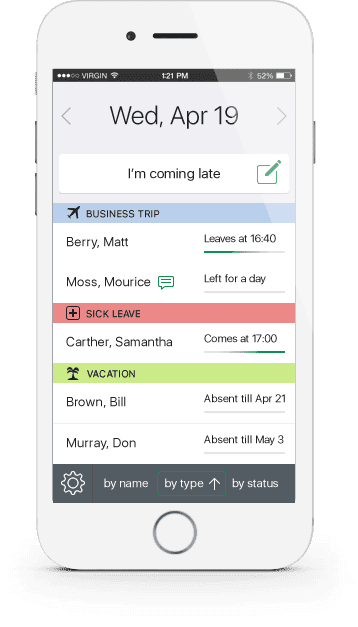
On top of that, actiPLANS integrates with actiTIME, a robust time tracking solution. That means you get more control over employee attendance and performance, accurate data for invoicing and payroll, and, ultimately, a much better understanding of how your resources are being utilized.
Brace yourself as you’re going to take resource scheduling to an entirely new level! With actiPLANS and actiTIME in your toolkit, the whole endeavor becomes truly effortless and stress-free.
Conclusion
Effective shift planning for home care agencies has a plethora of undeniable benefits:
- Highly satisfied clients
- Reduced turnover rates
- Enhanced productivity and efficiency
- Improved communication
- Better regulatory compliance
By creating staggered shift schedules, staying flexible, using modern software solutions, actively communicating with employees, and diligently tracking employee absences, you can cope with the challenges of shift scheduling effectively, and rest assured that your operations remain consistent.
With that said, we hope that the solutions outlined in this post have given you a better idea of how to manage shift schedules well. By following these guidelines, you will set your home care agency up for success as it continues to provide top-notch services.
Thanks for reading!




